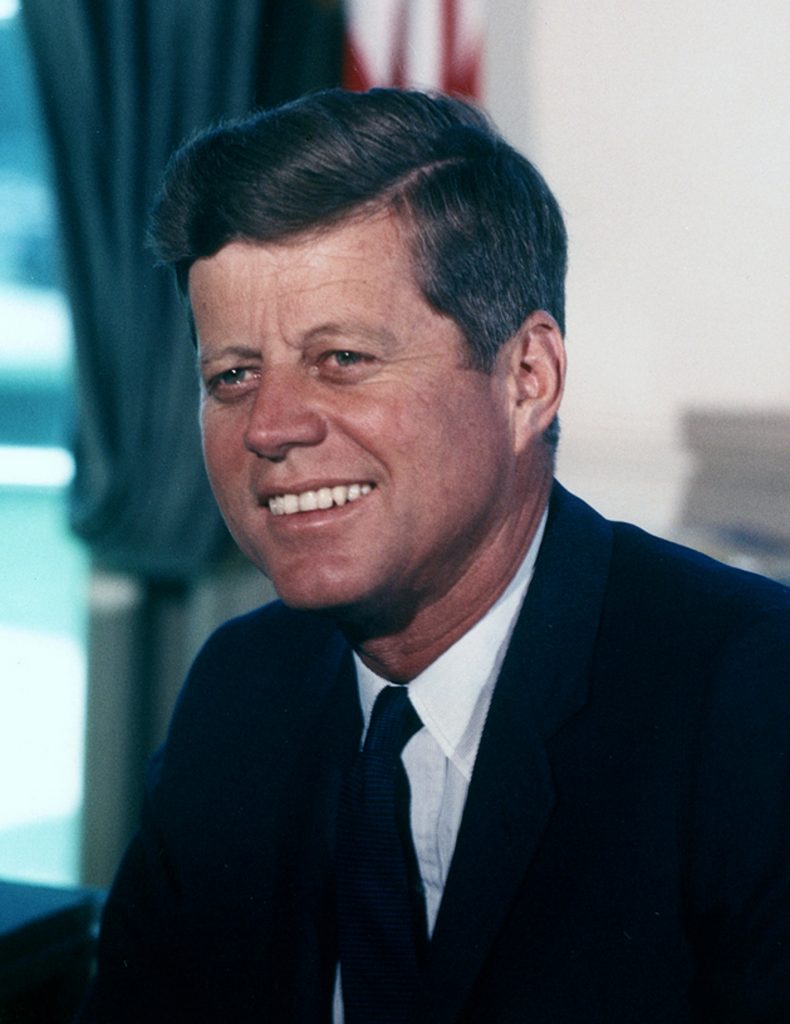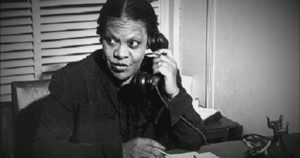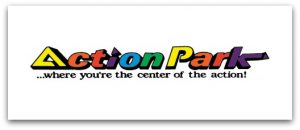Winner of the Fall 2017 StMU History Media Award for
Best Article in the Category of “United States History”
November 22, 1963 was a dark day for America. It was one of those days in the life of a nation when everyone remembers exactly where they were when they heard the news: Kennedy has been shot. New generations of Americans have since been born that did not experience that chilling day. For those who may not know, the people of Dallas were not strong supporters of President John F. Kennedy’s policies, ranging from his support for racial integration and his intention to ban nuclear testing, to rumors of his negotiations with the Soviet Union. Kennedy had hoped to smooth over many of those conflicts and win over many of those who opposed to him in Dallas by going to talk to his critics. His intention for that day in November was to drive through Dallas, give a speech to about 2500 local business leaders, and then ride through the streets of downtown Dallas, seeing thousands of people along the way. He hoped to calm the conflicts between the people who were against him and wanted to create a sense of peace.
Kennedy’s Secret Service Agents had warned Kennedy of the risks of riding through Dallas openly exposed in a “bubble top down” limousine. But Kennedy wanted to wave to his fans and supporters. Disregarding the concern, President Kennedy ordered the car’s top to be removed, and obviously being the president, he got what he wanted.1

By Kennedy’s side sat the beautiful First Lady Jacqueline Kennedy, with Texas Governor John Connally and his wife Nellie riding in the front seats. John F. Kennedy had been in San Antonio as well as Houston the day before riding through and waving to his beloved supporters and fans.2 While in San Antonio with Vice President Lyndon B. Johnson, they visited the United States Air Force School of Aerospace Medicine, as well as attend a testimonial dinner in Houston for United States representative Albert Thomas. The two then flew to Fort Worth to spend the night and rest there. The following morning, Novemeber 22, John F. Kennedy went on to a breakfast sponsored by the Fort Worth Chamber of Commerce, and then flew to Dallas to meet with his lovely wife, and start the ride through Dallas.3
The drive started off with the car making its way through downtown Dallas. The car made a quick left turn onto Elm Street, but to do so, the driver, Secret Service agent William Greer, had to drive at a speed of 11 mph, which was a direct violation of the rules given to ensure the safety of the president. They then rode past the Texas School Book Depository, and then towards a small grassy area called Dealey Plaza.
The large clock seen by many on the top of the billboard atop the Book Depository struck 12:30 pm, and within a matter of seconds sounds of gunshots, screams, and fear echoed through the streets of Dallas. Although it is not clear whether three to six shots were actually fired, it is known for a fact that one pierced through John F. Kennedy’s skull, painting the car red, and Mrs. Kennedy’s hands were suddenly filled with bits and pieces of his actual brain. She went into shock and repeated how she was literally holding her husband’s brains. It was a horrible memory that would last forever in her mind.
The Warren Commission was tasked with investigating the assassination, and it issued its findings less than a year later, concluding that Oswald had perfectly planned out the assassination, and the evidence used to prove it was that he was the only person on duty for the sixth floor at that exact time when JFK was shot, and that three bullets traced directly to his Mannlicher-Carcano meant he had to have fired at JFK.4

What led this man to commit such an act? We have learned that Lee Harvey Oswald’s childhood had been very sad; his mother showed him no love, despite all his efforts to please her, which is rough; every child needs love from their mother. Oswald’s father died leaving him and his siblings to grow up in an orphanage. Being deprived of the affection of parents, he often found himself in trouble. An incident with the Bronx zoo police due to truancy led to the findings that Oswald was of great intelligence paired with hostility and aggression. Oswald joined the US marines at the age of seventeen, and served a short time. He did not take reprimands from his superiors well. From June 1962 to November 1963, Oswald worked for a commercial photography business, a coffee company, and, finally, the Texas School Book Depository in Dallas. There is evidence that in March of 1963 he purchased a rifle and revolver from a mail-order company. Around the same time, April 1963, rumors spread of an attempted assassination on a right-wing extremist, General Edwin Walker. Oswald’s record began when he was arrested twice later that year, in August, for disturbances with anti-Castro Cubans. Oswald took a bus trip to Mexico City, where he visited the Soviet and Cuban embassies in an attempt to obtain a visa to enter Cuba. Being denied entrance into Cuba, Oswald returned to his family in Texas and obtained employment at the Book Depository.5
The evidence found that Oswald must have fled the depository within three minutes after the shooting, then got on a bus, from which he then exited, and then proceeded to enter a taxicab. Soon after the shooting, the Dallas police radioed a description of the suspect to all members of the police force and placed them on alert. Oswald, who had gone to his room and carried his .38-caliber pistol, was approached by police officer J. D. Tippit. Sadly, he shot and killed Tippit and ran to the Texas Theatre, where he was arrested at 2:50 pm.6 Kennedy was rushed to Parkland Memorial Hospital. Despite all the doctors’ efforts, Kennedy was pronounced dead at 1:00 pm, November 22, 1963. Oswald was subsequently murdered before he could even face a court. On November 24, 1963, he was murdered by a night club owner, Jack Ruby.
Jack Ruby was a severely distraught man, who felt a truly deep connection to JFK, which is the primary reason he targeted Lee Harvey Oswald. He was emotionally broken by the so recent and painful loss of the president. Ruby took matters into his own hands. He made a plan, and acted immediately on it. His first stop was an easy stop for him. As he walked through the doors of the Dallas Police Headquarters, police saw nothing more than a friendly-faced man, not knowing his true intentions. He had knowledge of Oswald entering and being held in the facility, which explains why he wanted to wait to see him. Ruby waited, and overheard bad news. He heard that there was a problem with the transportation of some sort, and realized his plan was going to need to be reconstructed. He chose to wait Oswald out. While waiting, things delayed the schedule, and led to Ruby parking one block away, re-entering the building and hiding in the basement garage of the police basement. While waiting out the arrival of Oswald, he noticed the guard on watch at the time had left, and saw an opening to make his way towards the spot Oswald was to arrive at. Making his way, Ruby saw many reporters, and camera lights were going off constantly. And then saw Lee Harvey Oswald. He made his way towards Oswald holding the .38 caliber and then fired at Oswald, killing him on live television. People around the nation witnessed the murder happen within seconds, and then they witnessed the arrest of Jack Ruby that happened immediately after his killing. Ironically, Oswald was rushed to the same hospital where Kennedy had been taken just two days earlier. He was buried the same day Kennedy was laid to rest, November 25, 1963.

John F. Kennedy had a beautiful service. The site was designed by a long known friend, John Carl Wernicke. He was buried in Arlington National Cemetery, and was marked with an eternal flame, symbolizing his lifelong and eternal remembrance. The 22nd day of November, 1963 is a day that will be remembered by many as one of the nation’s saddest days. This was the day the thirty-fifth president, John Fitzgerald Kennedy, was assassinated. This was the day that the nation lost one of its most beloved presidents. This day impacted so many people’s lives because all went through this tragedy together.7
- Stuart A. Kallen, The John F. Kennedy Assassination (Detroit: Lucent Books, 2009), 12. ↵
- Alice L. George, The Assassination of John F Kennedy: Political Trauma And American Memory (New York: Routeledge eBook Collection,2013), 37. ↵
- Handbook of Texas Online, June 2010, “Kennedy Assassination,” Texas State Historical Association. ↵
- James R. Phelan, “The Assassination: assassination,” New York Times, November 23, 1975, 250. ↵
- Salem Press Biographical Encyclopedia, January 2017, s.v. “Lee Harvey Oswald,” by Scott P. Johnson. ↵
- Salem Press Encyclopedia, March 2017, s.v. “President Kennedy is Assassinated,” by Bennet H. Wall. ↵
- Martin Luther King, “John F. Kennedy,”Transition, no. 15 (1964): 27-28. ↵



64 comments
Maria Callejas
JFK is my favorite political figure of all time, so this article was a must read! I have to say, you did a great job throughout you article. You present evidence accurately and chronologically, which makes it an authentic take on one of the country’s darkest days. Also, great usage of facts supporting your information, specifically when you give background information about Oswald’s childhood and Ruby’s motives. I am a strong believer that although Oswald was the only shooter, he didn’t work alone. There were many people who wanted JFK dead, some say the mafia, others say the CIA, I say LBJ. But I’ll guess we never know. Overall, great job!
Benjamin Voy
What a great article. I still find it strange how people don’t believe the police were correct. I believe you have fully uncovered the truth in this article. I have watched many documentaries on this case and believe there is no other conclusion other than Lee Harvey Oswald killed Kennedy. This article really summed up what happened perfectly and shed new light on the way this case is viewed. Great article
Christine Sackey
This was a very well written article. I thought that it was interesting to hear all the details that went into the assassination of JFK. I did not know much about the murder prior to reading this article, so I thought this article was defiantly helpful. I found it heartbreaking about the part describing the former first lady, Jacqueline Kennedy holding her husband’s brain. John F Kennedy was defiantly taken from this Earth too soon.
Ezequiel De La Fuente
This was a great article and it provided me with much information I didn’t know prior to reading it. This may sound dumb but I’ve seen many videos in relation to JFK’s assassination and for some reason I was convinced that his killer was still unknown. I was so wrong. I liked your detail on the killer, and everything else leading up to his death and following.
Teresa Valdez
The narrative that the article paints is very well researched and engaging. However, it does seem a bit unorganized at times. Despite this, it is a strong piece. I liked that the article was framed with Oswald as the main character. The new generation, as the article phrases this, remember the assassination of Kennedy, but they don’t focus on what could have caused the murder. I had no idea that Jack Ruby decided to take justice into his own hands and killed Oswald. Great job!
Cherice Leach
Good article. This is such an interesting story but also a sad one for the history of the US. John F. Kennedy was a fairly good president and the fact he couldn’t finish what he started due to murder is quite displeasing. This case is most interesting because of the retribution the murderer of John F. Kennedy got from an individual who was so inspired by our former president. This Jack Ruby guy doesn’t take the saying, “an eye for an eye,” very figuratively does he.
Clarissa Bustamante
I thought this article was very good! I’ve always been interested in finding out what led to the assassination of Kennedy. I remember reading and learning about of much of a tragic event it was. I have driven down the same road that is now a memorial for JFK before and it is crazy how I was in the same location and city something like this happened in. But I did not know that Lee Oswald was assassinated before he ever faced trail. It is also weird how JFK and Oswald were taken to the same hospital and also buried on the same day. Overall this article was very interesting.
Manuel Aguilera
I was aware of his assassination but I was not aware of the background that led up to JFK’s assassination. I did not know that the same man who had killed the president also ended up killing another man and then was killed himself by a man seeking revenge. To be honest, Ruby should not have been arrested for killing Oswald, he should have already been killed on the spot. Although it is a tragedy that JKF was killed, I feel that there are changeable factors that could have ensured his safety, nonetheless, I am sad such measures must be taken to secure the well-being of the president of the United States.
Alexis Renteria
The only things I remember from this tragic event in American History was that Kennedy refused to have bullet proof windows because he wanted to be able to wave to the people and that he was shot in the head because he did not follow safety protocol. However, I did not know that Kennedy’s shooter was shot and killed on live TV by a man who felt a strong bond with the president of his country. This article did a great job of explaining the tragic assassination of one of our presidents and explaining the events that led up to it.
Joshua Breard
I know a fair amount about the assassination and agree with it being one of the greatest unsolved mysteries in American history. Questions about if there was just one shooter or multiple shooters, umbrella man, and other various conspiracy theories surrounding the case. I think the political side of this too where he specifically went to Dallas to try and win people over is a very interesting part of this case too. Very good article!